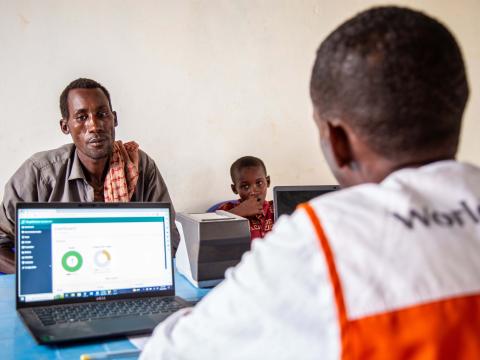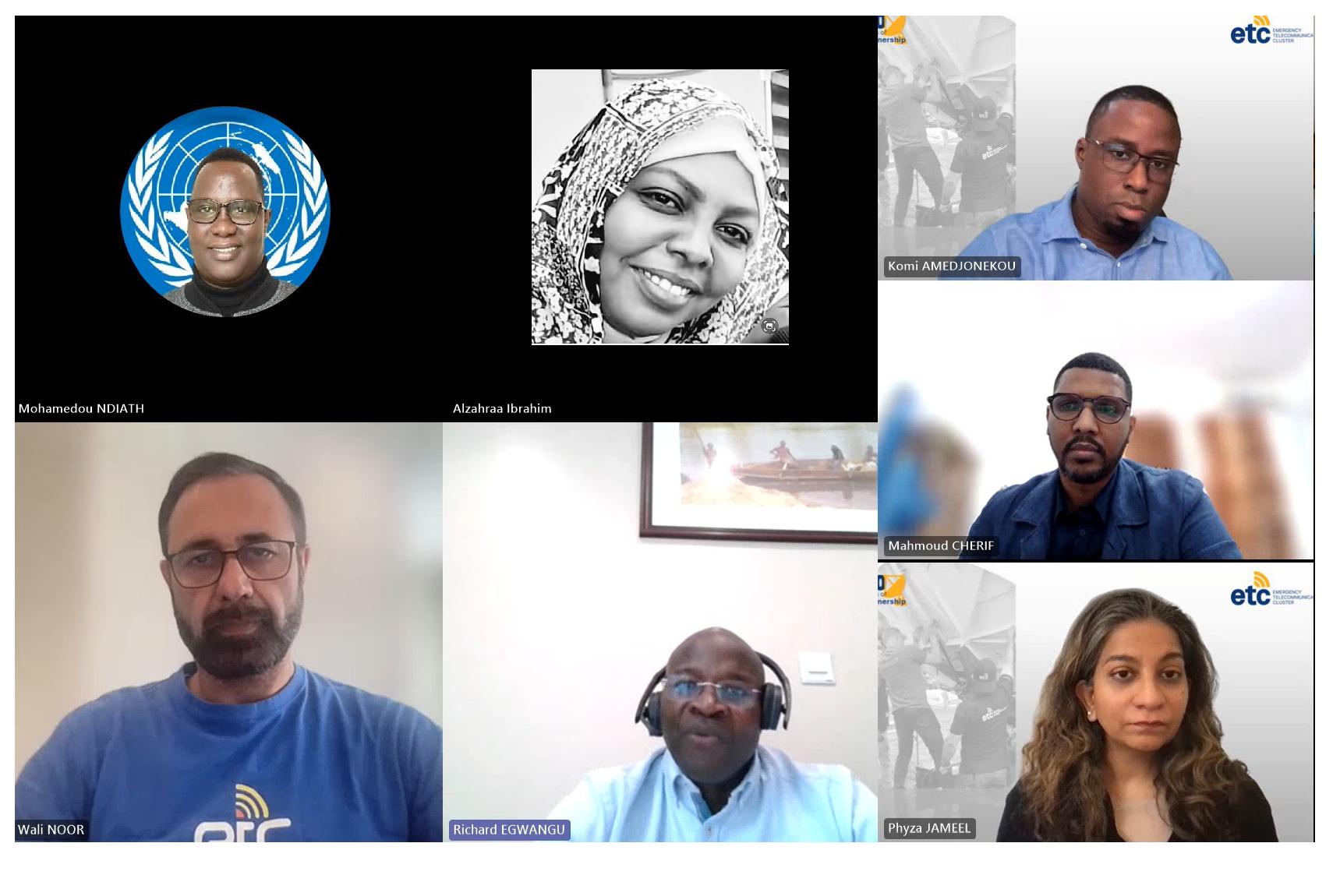Partnering to leverage technology for a safe and effective people-centred humanitarian action

For over 75 years, World Vision has been committed to protecting and supporting children and communities in their journey towards fullness of life. To remain a fit-for-purpose organisation, World Vision maintains a future-focused posture, continuously enhancing efficiency, collaboration, and innovation to ensure the organisation’s humanitarian action is effective and people-centred. By embracing a cross-functional approach, WV fosters collaboration between teams, across organisational functions, and with partners to encourage exchanging ideas and expertise.
Alzahraa Ibrahim is the Global Technology and Digital Solutions (GTD) Coordinator in Sudan, where World Vision is currently serving the most vulnerable children and communities in at least five states. In the context of the largest displacement crisis in the world, Alzahraa and other technical colleagues from partner INGOs, work every day to ensure that telecommunication networks are functioning effectively to reach and assist the people we collectively serve. To ensure the safety, timeliness and effectiveness of relief efforts, humanitarian responses need reliable emergency telecommunications that facilitate efficient coordination, communication with communities, information sharing, etc.
The telecommunications-related challenges to be addressed in Sudan are multiple and interconnected. To begin with, access restrictions are linked to the security situation, which remains highly volatile in certain locations, and is compounded by bureaucratic and administrative Issues. Secondly, infrastructure challenges: mobile and internet connectivity are unavailable in some places, with major providers experiencing shutdowns, leaving millions without access to communication.
Restrictions on certain mobile satellite devices have worsened the problem. Regular power outages and drone strikes continue to target critical infrastructure such as power plants. As a result, humanitarian organisations find it difficult to maintain telecommunications equipment and ensure consistent connectivity.
To share these key insights, experiences and potential solutions, World Vision, now an Emergency Telecommunications Cluster (ETC) member, was invited as a panellist in the ‘ETC Field Perspectives’ discussion during the annual ETC plenary meeting.
As the only NGO panellist, Alzahraa Ibrahim, a World Vision Sudan staff, represented the voice of NGOs/ INGOs among other ETC field coordinators panellists, advocating for the importance of partnering with local organisations, highlighting the centrality of innovation in a VUCA (volatile, uncertain, complex and ambiguous) environment like Sudan and urging for continued and collective advocacy for access and lifting of restrictions to humanitarian services in Sudan.

The sharing sparked a discussion on key action steps that can be taken to be better prepared to confront the challenges experienced by humanitarian organisations in fragile contexts like Sudan.
- Prioritise working with (and empowering) local partners to identify reliable telecommunications service providers in existing operational locations. This exercise reduces the barriers between local communities/actors and international humanitarian organisations. In the specific context of Sudan, this could result in added value for the ongoing mapping of existing ‘safe spaces’ that provide services to affected populations and require ETC connectivity.
Invest in innovative solutions. Humanitarian organisations should take the lead in exploring solutions that ensure effective communication and collaboration, and timely provision of humanitarian services to affected communities in locations that are difficult to access and where the infrastructure is damaged or unreliable. For instance, last year World Vision successfully implemented a cost-effective and secure Community Feedback and Complaints Mechanism System with offline capabilities in Sudan.
Continue to engage in joint advocacy efforts. INGOs and the ETC can jointly advocate for policy changes that lift restrictions on satellite internet and other technologies, enabling better connectivity. At the global level, World Vision is already working towards interoperability of systems with its partners, including World Food Programme (WFP), for example, Last Mile Mobile Solution (LMMS) interoperability with WFP Partner Connect for end-to-end tracking of humanitarian assistance.
World Vision’s participation in global events like the Emergency Telecommunications Cluster (ETC) Plenary meeting provides an opportunity to highlight the importance of collaboration and our commitment to leveraging technology to better safeguard children, communities, donors and data.
About the ETC:
The Emergency Telecommunications Cluster (ETC) is a global network of organisations that work together to provide shared communications services in humanitarian emergencies. The ETC is one of the 11 clusters designated by the Inter-Agency Standing Committee (IASC), and it is led by the WFP at a global level. World Vision recently became an ETC Member, thanks to engagement and advocacy by Anthony Kimani and Viviana De Annuntiis.
Over the years, World Vision has collaborated with the ETC in, among other things, capacity building and strategy formulation. The engagement with the ETC further strengthens the existing relationship between WFP and WV as the largest humanitarian partner.
As an ETC member that is child-focused and community-based, we shall continue collaborating with the ETC and advocating within the ETC for the most vulnerable children's communities of the world. Key areas that World Vision will collaborate with the ETC include capacity building and sharing (especially at local levels), last mile technical solutions and services delivery, and thought leadership.